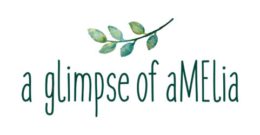Eco Store Dishwasher Tablets
SIMPLY TUESDAY REVIEW
Ecostore Fragrance Free, Plant Based, Dishwashing Tablets
🌱Our no-mess tablets are individually wrapped in a PVA biodegradable wrapper that dissolves in your machine, so there’s no need to touch the tablet.
🌱Safer for our environment: Our tablets are approved by the European Union Ecolabel (License no: DK/015/001) for reducing environmental impact through the product’s lifecycle, from raw material extraction to production, distribution and disposal.
🌱Enzymes: We use enzymes in our dishwasher tablets and powder as they are very efficient cleaners and help reduce the number of chemicals needed to get similar results.
🌱Enzymes are readily biodegradable.
🌱 <1% in formulation is all it takes to get excellent results.
🌱Using enzymes allows us to formulate safer, more eco friendly dishwasher products with a lower alkalinity.
🌱The cleaning grade enzymes we use are derived from a strictly controlled laboratory process which utilises GE.
🌱We are not against the ethical use of GE contained in laboratories e.g. for the production of medicines such as insulin or more recently for the production of enzymes.
🌱Most Non-ionic surfactants carry no charge and are relatively non-toxic.
advised, can be known as a skin irritant. Safe if used in up to 35% of products and only when formulated to avoid skin irritation. Moderate hazard to health. Mineral derived, does not accumulate and is suitable for greywater and septic tanks.
🔹Glycerine (Tabletting Aid) = used as a Tablet binders tablet binders are one of the most essential elements in the formulation of a tablet. Because they promote cohesiveness, the binders, also called adhesives, help the other ingredients in a tablet to mix together.
Glycerol is a simple polyol compound. It is a colorless, odorless, viscous liquid that is sweet-tasting and non-toxic
🔹Polyacrylate (Dispersing Agent)= Caution advised- Sodium polyacrylate is toxic if swallowed and exposure to the eyes should be avoided. Sodium polyacrylate crystals can be harmful to nasal membranes, and should not be inhaled.
🔹Sodium Citrate= Low hazard to health. Plant derived, biodegradable and suitable for greywater and septic tanks.
Sodium citrate is the sodium salt of citric acid, which occurs naturally in many citrus fruits. Sodium citrate can be used as a builder (reduces water hardness and binds and captures removed soil to prevent it from redepositing during washing.
Sodium Carbonate or ‘washing soda’ is a white powder often used as a water softener. It is produced in large quantities from salt (sodium chloride) and limestone by a method known as the Solvay process.
🔹Sodium Percarbonate (Oxygen Producing Whitener) = Oxygen bleach, or sodium percarbonate, is made from sodium carbonate (also know as soda ash) and hydrogen peroxide. It works by releasing oxygen once it is exposed to water. This release of oxygen lifts stains and dirt off whatever you’re cleaning. Used as an alternative to chlorine bleach. You still need to take care when using oxygen bleach, such as avoiding contact with eyes, wearing gloves if your skin is sensitive, not inhaling it, and keeping it out of reach of children. Its is efficient, economical, non-toxic, environmentally safe, biodegradable, and leaves no harmful by-products or residues which can harm the environment.
🔹Sodium Bicarbonate (Builder)=used as a filler in the tablet. Safe as used up to 50% of product. Safe for most people. Low hazard to health. Derived from minerals, does not accumulate and suitable for greywater and septic tanks. Also know as Bi carb soda used as a rising agent and whitening agent. 🔹TAED (Whitener Activator)= Tetraacetylethylenediamine, commonly abbreviated as TAED, is an organic compound. Triacetylethylenediamine is mostly non-toxic and easily biodegradable. TAED and its byproduct DAED have low aquatic ecotoxicicity.

